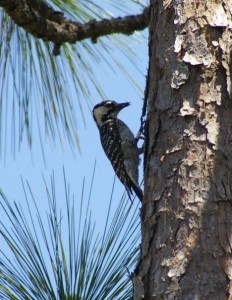
Late last week, inspired by our newly flowering Venus Flytraps, I posted pictures of Amy and my carnivorous plant collection on twitter and on the Southern Fried Science Facebook page. After David’s recent post on a nurse shark that underwent major dietary changes following traumatic surgery and captivity, our wonderful readers must have been on high alert for trophic shifts following anthropogenic disturbance-type articles (or, more casually, “stuff that eats stuff now eats different stuff”), because this morning my inbox was filled with links to variations on the following article: Pollution makes carnivorous plants go vegetarian. Whenever human activity alters trophic interactions, there is potential for major ecological changes in an ecosystem. While ecosystems are dynamic, shape by continuous variation in community structure and resource and habitat variability, rapid changes can result in total collapse or permanent shifts to functional states.
Unfortunately, these “eating different stuff” articles rarely reflect the deep and nuance ecologic reality of trophic interactions and instead capitalize on the narrative of “even animals are going veggie to save the planet!” Allow me to revel in my cultural roots with a hearty “Oy vey!”

